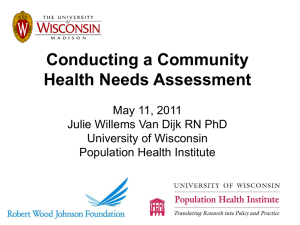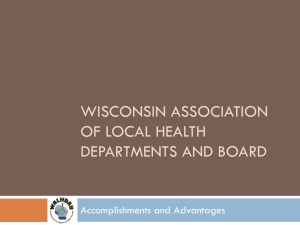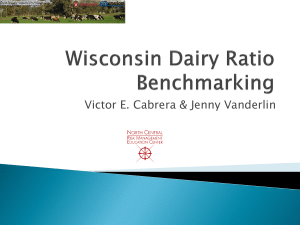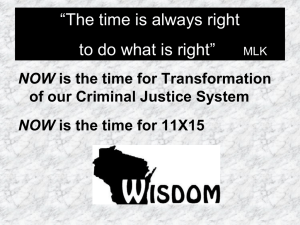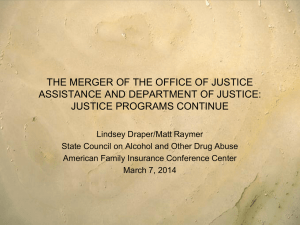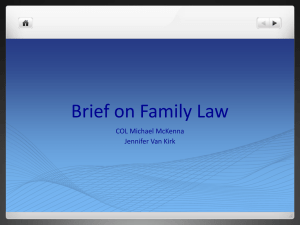Treatment Alternatives and Diversion Grant Program * A Critical
advertisement
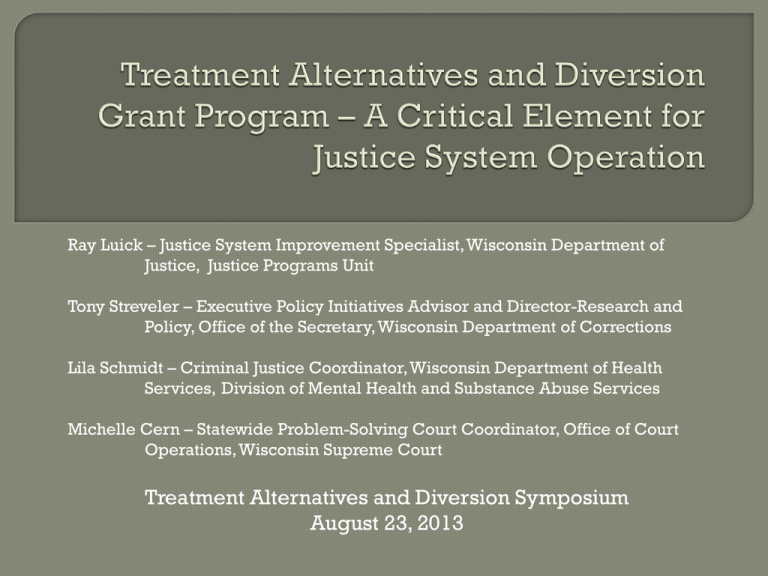
Ray Luick – Justice System Improvement Specialist, Wisconsin Department of Justice, Justice Programs Unit Tony Streveler – Executive Policy Initiatives Advisor and Director-Research and Policy, Office of the Secretary, Wisconsin Department of Corrections Lila Schmidt – Criminal Justice Coordinator, Wisconsin Department of Health Services, Division of Mental Health and Substance Abuse Services Michelle Cern – Statewide Problem-Solving Court Coordinator, Office of Court Operations, Wisconsin Supreme Court Treatment Alternatives and Diversion Symposium August 23, 2013 Wisconsin Department of Justice Wisconsin Department of Health Services Wisconsin Department of Corrections Wisconsin Director of State Courts Office 2005 Wisconsin Act 25 established the Treatment Alternatives and Diversion Program Wis. Stat. Section 16.964(12) • To promote public safety, reduce prison and jail populations, reduce prosecution and incarceration costs, reduce recidivism, and improve the welfare of participants’ families by meeting the comprehensive needs to participants. • To provide grants to counties to enable them to establish and operate programs, including suspended and deferred prosecution programs and programs based on principles of restorative justice, that provide alternatives to prosecution and incarceration for criminal offenders who abuse alcohol or other drugs and are not violent offenders. Initially funded programs in seven counties: Adult drug treatment courts - Burnett, Rock, Washburn and Wood counties Diversion programs - Dane, Milwaukee, and Washington counties Expanded to include funding of diversion programs in Ashland and Bayfield counties in 2012 Current funding • $1,038,900 for currently funded projects New funding • The 2013-2015 biennial budget, the provided an additional $1M annually for the TAD grant program. Match • TAD program requires a 25% local cash match Evidence-Based Practices • Applicant must use evidence-based practices in your diversion or problem-solving court program Technical Assistance • Grant recipients can receive technical assistance from program partners as necessary/requested Important Dates: • Applications Due - October 17, 2013 • Project Start Date – January 1, 2014 • Project End Date – December 31, 2014 Projects continuing to meet program requirements will be able to reapply for funding through December 31, 2016 Two categories of funding: • Nine currently funded projects ($1,038,900) • New projects – projects in counties not currently receiving TAD funds ($1,000,000) Eligible Expenses: • • • • Personnel and fringe benefits Travel and training Consultant/contractual expenses Supplies and operating expenses Specific application criteria for pre-trial diversion and problem-solving courts Letters of Support Reporting Requirements: • Regular progress reports • Program evaluation • Subject to compliance with applicable state and national standards related to diversion and problem-solving court projects • Problem-solving courts – subject to information sharing requirements of the State ProblemSolving Court Coordinator Grant Writing 101 – DOJ resource guide • Step by step advice on grant application process • Budget development • Grant writing tips TAD Partners and DOJ staff will be available to answer questions related to grant application and process


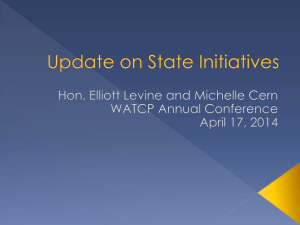
![[Company Name] Certificate of Completion](http://s2.studylib.net/store/data/005402466_1-8a11f4ced01fd5876feee99f8d8e6494-300x300.png)
